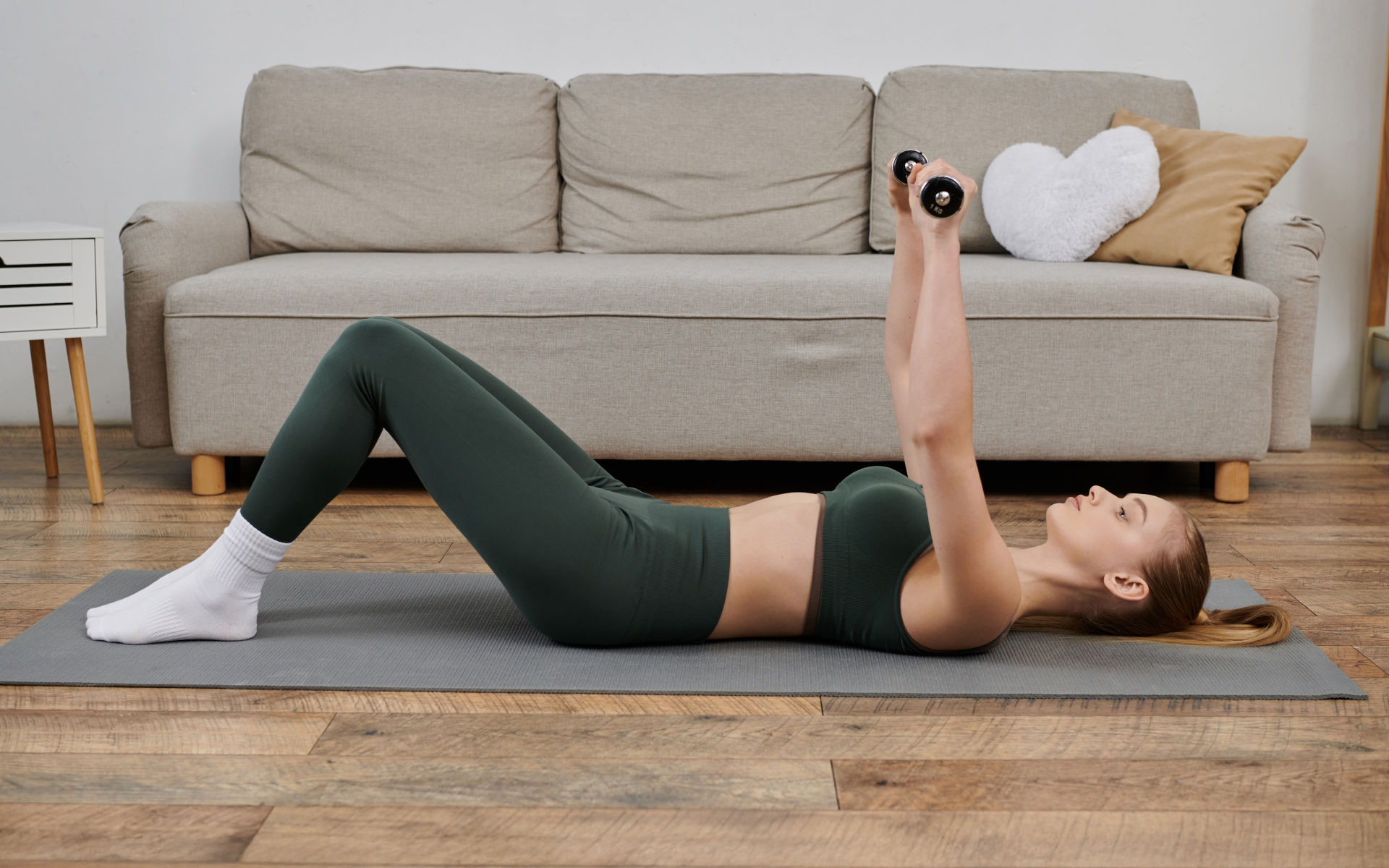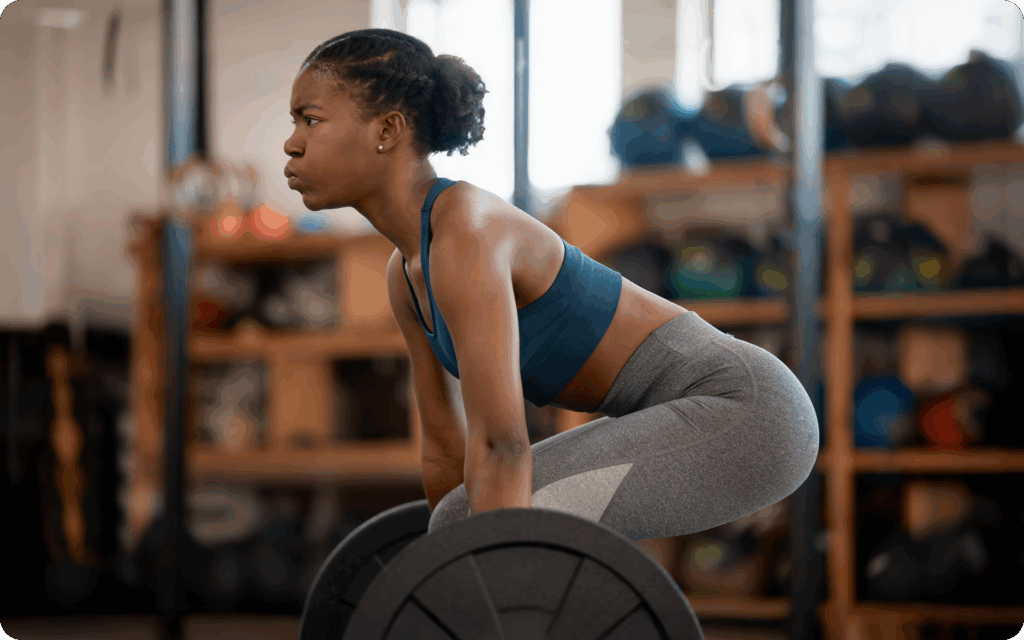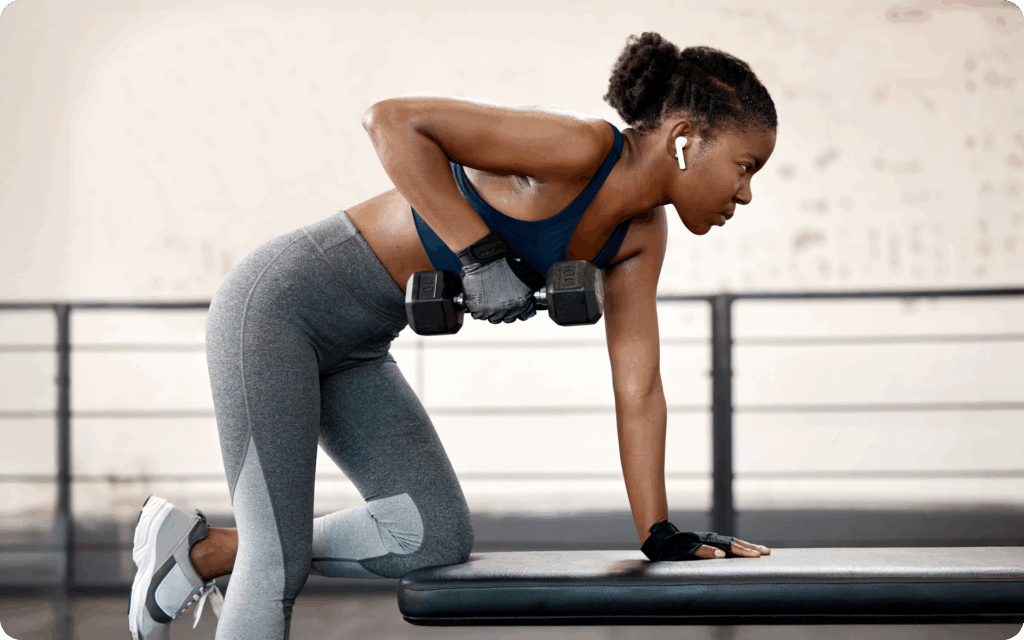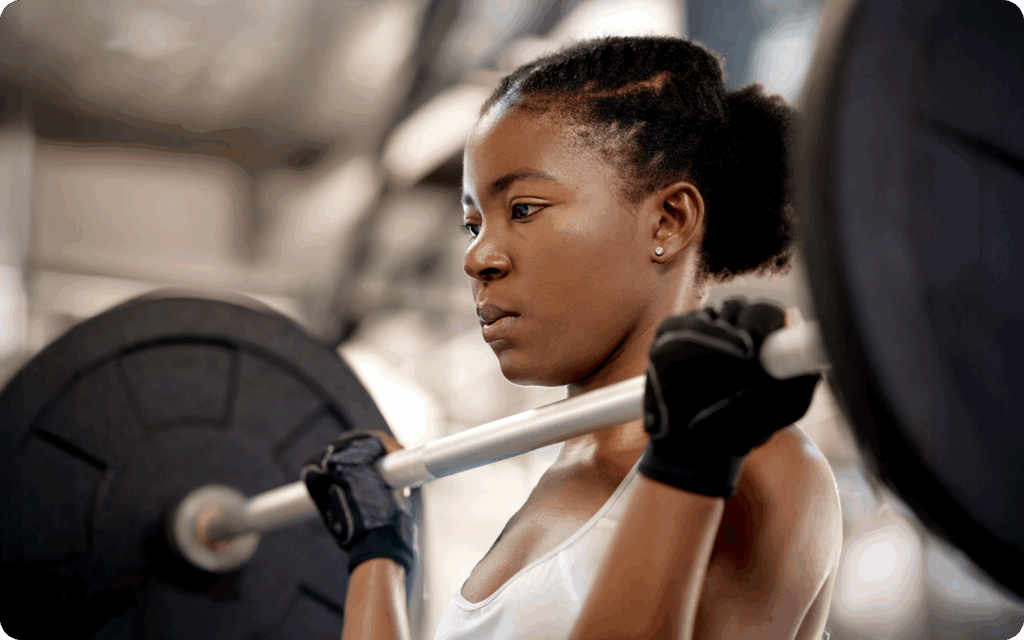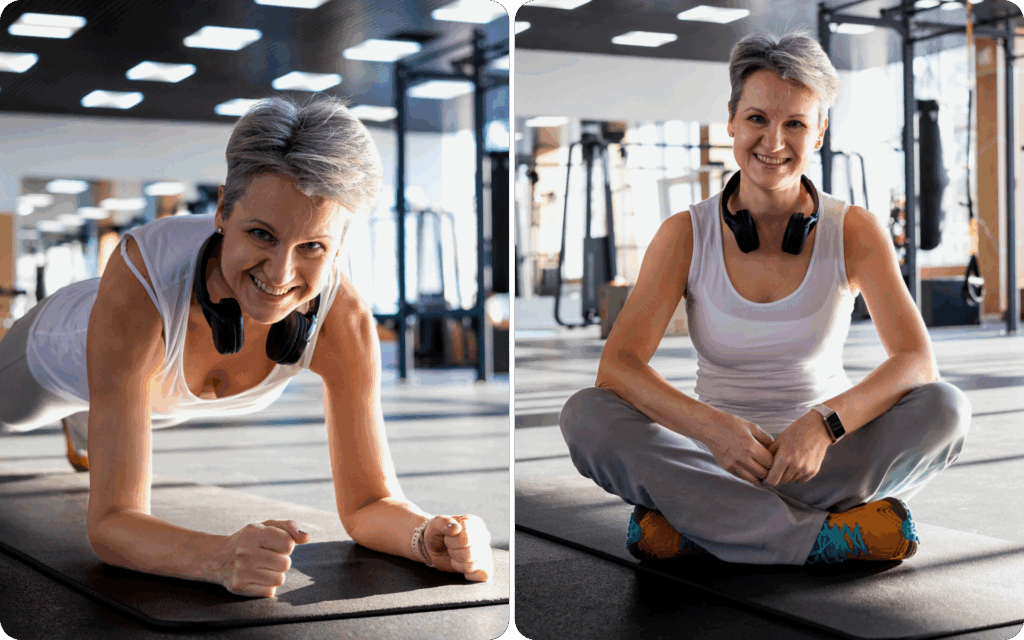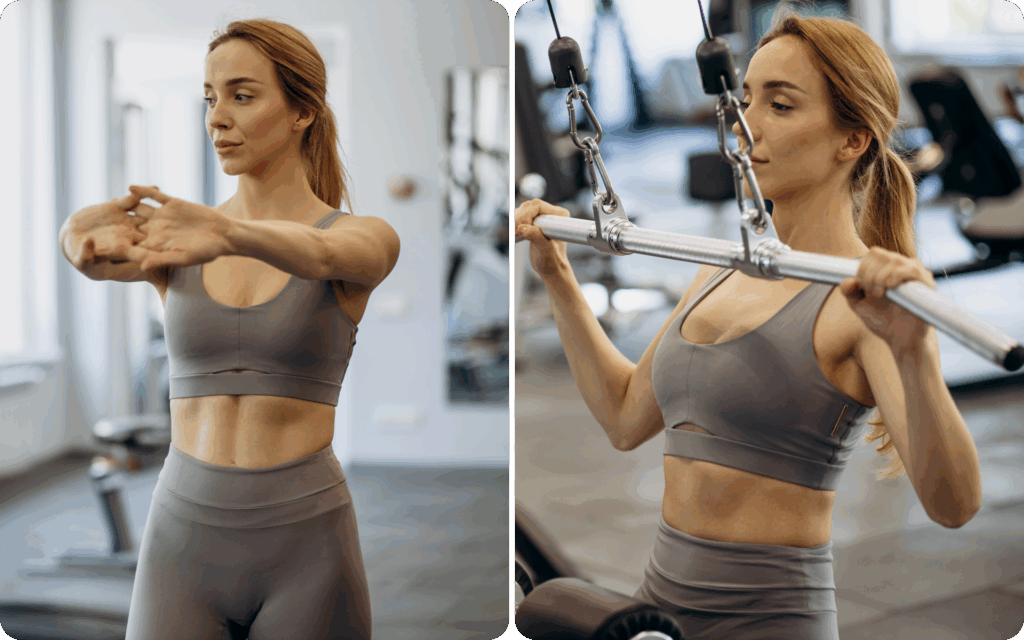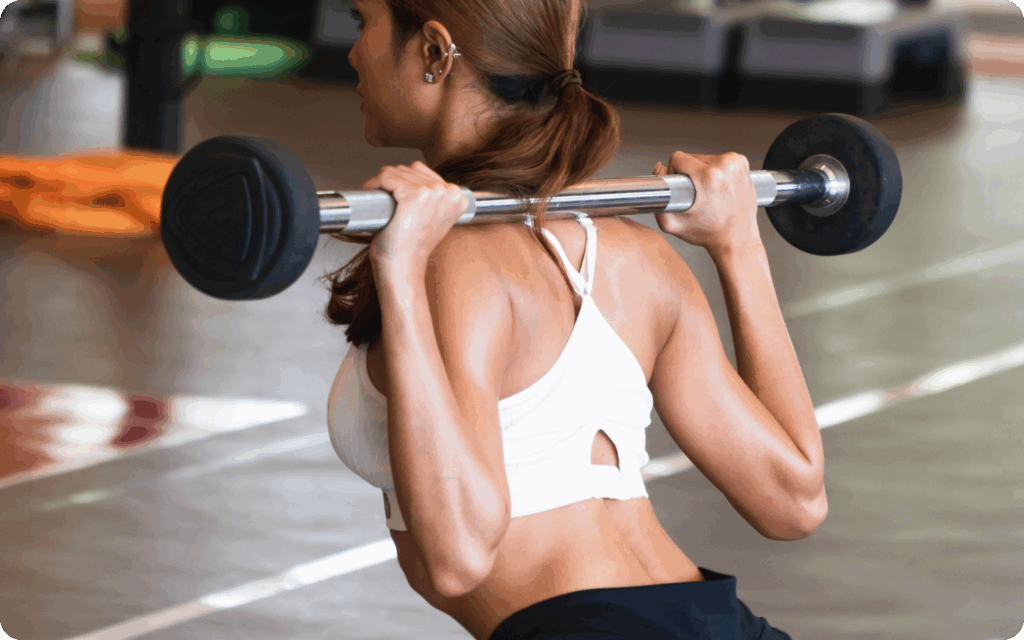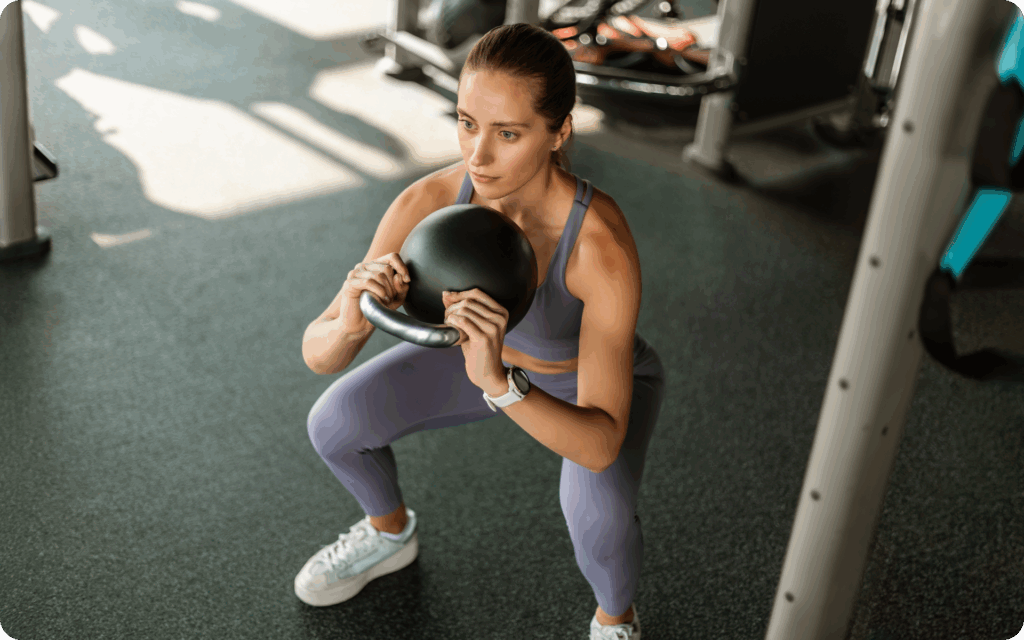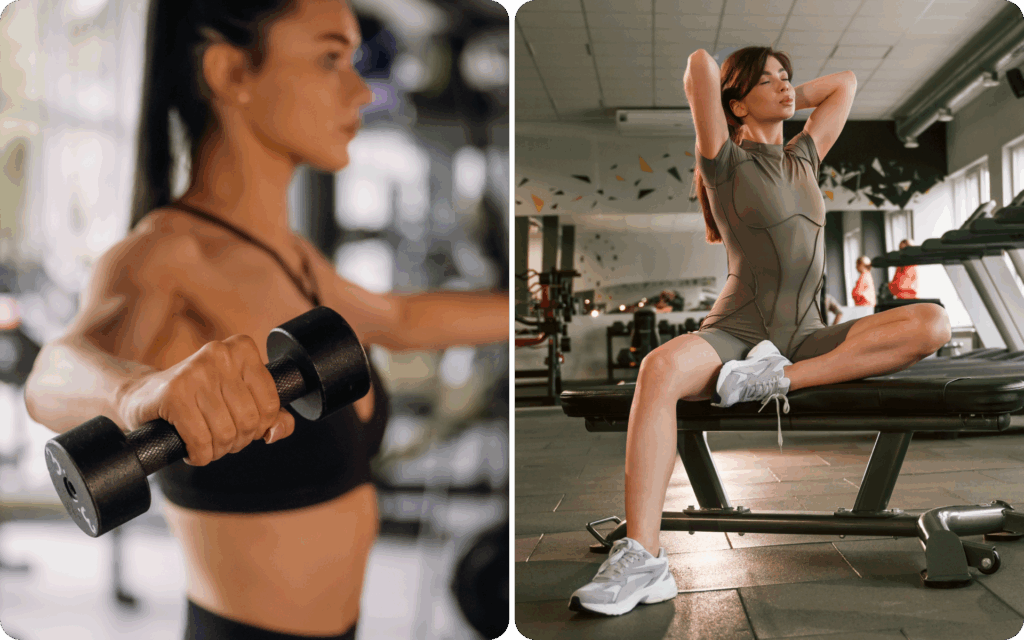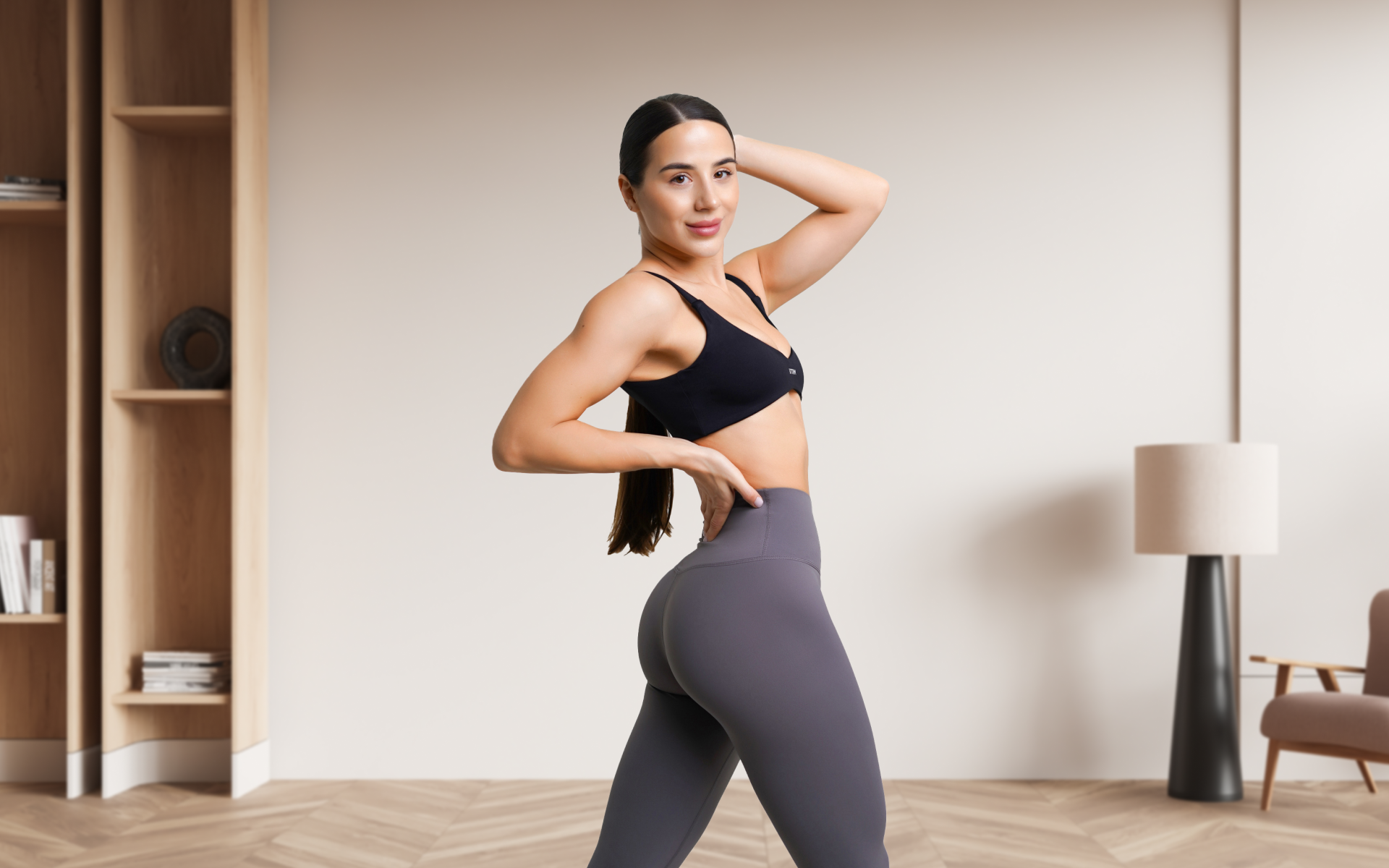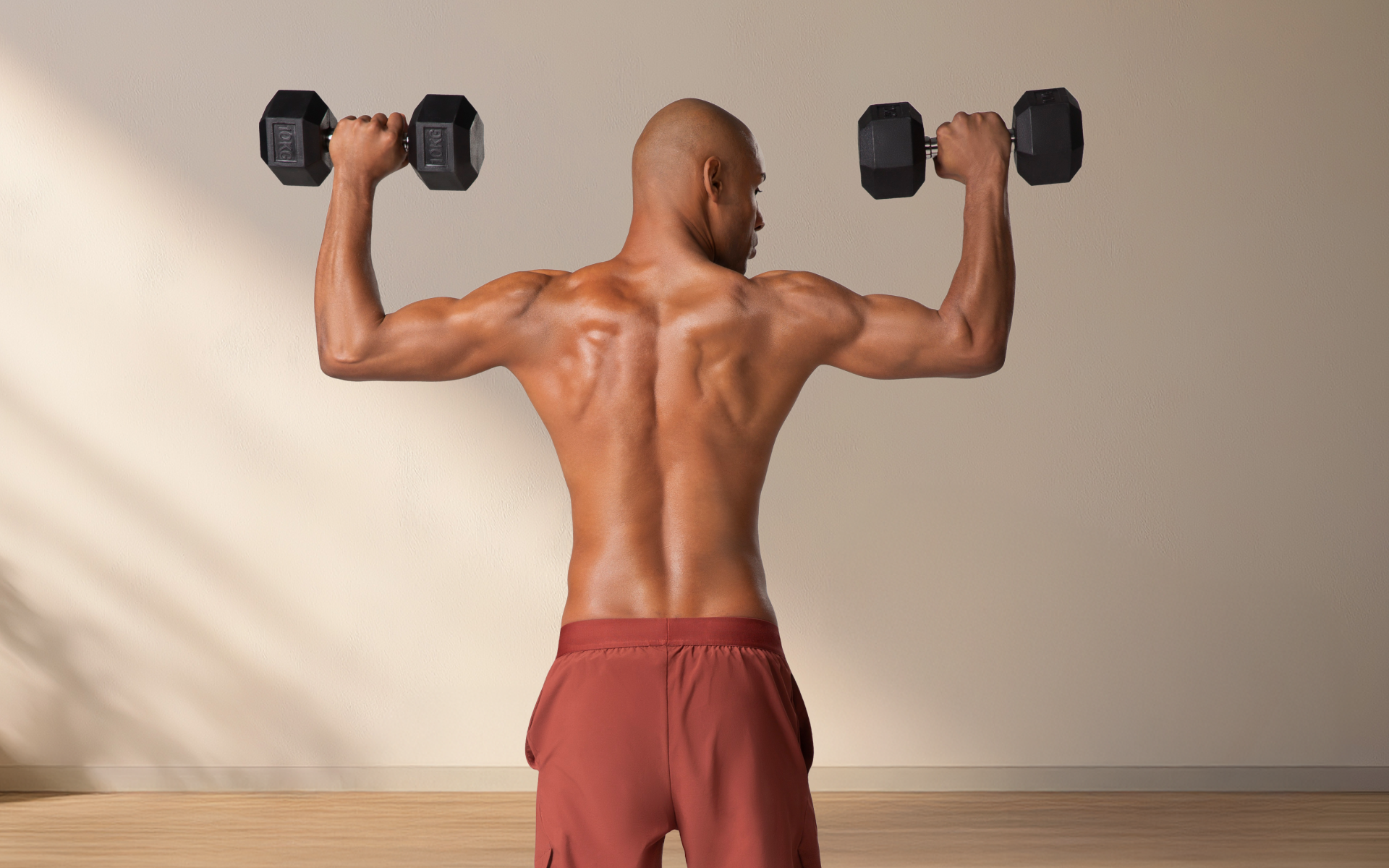For too long, the narrative around strength training for women has been clouded by myths and misconceptions.
From fears of “getting bulky” to uncertainty about where to even begin, many women have been steered away from one of the most powerful tools for enhancing physical and mental well-being. This guide is designed to cut through that noise with a clear, evidence-driven approach.
Here, we’ll dismantle outdated ideas and provide a structured, actionable strength training workout plan for women. We’ll explore the science behind how women build muscle, lose fat, and transform their bodies through resistance training, all backed by the latest research in physiology and sports science.
What Workout Burns the Most Fat for Females?
When the goal is fat loss, many people immediately think of cardio. While activities such as running or cycling are effective for burning calories during the session itself, strength training offers a unique and powerful advantage for long-term fat loss through its impact on your metabolism.
The most effective workout for burning fat combines two key elements:
- Increasing Lean Muscle Mass: Muscle tissue is metabolically active, which means it burns calories even when you’re at rest (1). For every pound of muscle you gain, your body burns an additional 6 to 10 calories per day (2). A well-designed weightlifting program for women is the most efficient way to build this lean tissue.
- Elevating Post-Exercise Oxygen Consumption (EPOC): Often called the “afterburn effect”, EPOC is the number of calories your body burns after a workout to recover and return to its resting state (3). Intense resistance training, particularly using compound movements that engage multiple muscle groups, creates a significant metabolic disturbance, which leads to a higher and more sustained EPOC that can last for 24 to 48 hours (4).
A workout that is centered on large, compound exercises such as squats, deadlifts, presses, and rows will burn the most fat/calories. These movements recruit more muscle fibers, demand more energy, and create a greater hormonal response that is conducive to fat loss compared to isolation exercises such as bicep curls (3).
Can You Lose Weight with Strength Training as a Female?
Yes, you can absolutely lose weight with strength training, but it’s important to understand how it works.
Weight loss is ultimately determined by a calorie deficit – burning more calories than you consume (5). Strength training contributes to this equation in a more comprehensive way than just the number on the scale.
Here’s the breakdown:
- Strength Training Triggers Body Recomposition
Strength training helps you lose fat while preserving or even gaining lean muscle mass. This is a process known as body recomposition (6). As a result, you may see the number on the scale stay the same or even increase slightly, while your clothes fit better and you look leaner. This is because muscle is denser than fat, taking up approximately 15% less space for the same weight (7). Dive deeper into the 5 benefits of strength training with our dedicated article.
- Improves Boosted Resting Metabolic Rate (RMR)
Building muscle increases your RMR. A 10-week resistance training program can increase lean weight by an average of 1.4 kg (about 3 pounds) and increase your RMR by 7% (8). This means you burn more calories around the clock, which makes it easier to create and maintain a calorie deficit.
Whether you’re a workout beast or just a beginner making your first foray into the world of fitness and dieting – BetterMe has a lot to offer to both newbies and experts! Install the app and experience the versatility first-hand!
- Improves Insulin Sensitivity
Strength training helps your muscle cells become more sensitive to insulin. This means that your body is better able to use carbohydrates for energy and muscle repair rather than storing them as fat, a key factor in weight management (9).
Read more: Lose Fat, Gain Muscle Workout Plan – Exercises and Healthy Eating Tips Included
How Many Days a Week Should a Woman Strength Train?
The optimal training frequency depends on your goals, experience level, and ability to recover. However, research provides clear guidelines for maximizing results. To stimulate muscle protein synthesis – the process of repairing and building muscle – it’s most effective to train each major muscle group at least twice per week (10).
Based on this principle, here are the recommendations:
- For Beginners: Training 2-3 days per week using a full-body strength training workout plan for women is ideal (11). This frequency allows you to hit all the major muscle groups twice weekly while providing ample recovery time between sessions.
- For Intermediate to Advanced: Training 3-5 days per week is effective. This allows for higher volume and intensity, often using a split routine (e.g. upper/lower body) to allow specific muscle groups to recover while you train others (11).
A recent 2025 meta-analysis confirmed that women have a similar relative potential for muscle growth as men (12). Therefore, these evidence-based frequency guidelines apply equally. The key is consistency and ensuring you get at least 48 hours of rest for a specific muscle group before training it again.
What Is a Good Strength Training Workout Plan for Women?
A good plan is one that is structured, progressive, and balanced. It should prioritize compound movements, incorporate progressive overload, and manage fatigue. This 4-week program is designed as a 30-day strength training workout plan for women that can be performed at the gym or adapted for home.
Program Overview: 3-Day Full-Body Routine
This program is structured around three non-consecutive days per week (e.g. Monday, Wednesday, Friday) to ensure adequate recovery.
Workout A
| Exercise | Sets | Reps | Rest | Intensity (RIR) |
|---|---|---|---|---|
| Goblet squat | 3 | 8-12 | 60-90s | 2-3 |
| Romanian deadlift (RDL) | 3 | 8-12 | 60-90s | 2-3 |
| Dumbbell bench press | 3 | 8-12 | 60-90s | 2-3 |
| Bent-over dumbbell row | 3 | 10-15 | 60-90s | 2-3 |
| Plank | 3 | 30-60s | 60s | To failure |
| Exercise | Sets | Reps | Rest | Intensity (RIR) |
|---|---|---|---|---|
| Glute bridge (hold 3 seconds at top) | 3 | 12-15 | 60-90s | 2-3 |
| Dumbbell lunge | 3 | 10-15 per leg | 60s | 1-2 |
| Overhead press (dumbbell) | 3 | 8-12 | 60-90s | 2-3 |
| Lat pulldown / pull-ups | 3 | 10-15 | 60-90s | 2-3 |
| Leg raises | 3 | 15-20 | 60s | 1-2 |
Weekly Schedule
- Week 1: A, B, A
- Week 2: B, A, B
- Week 3: A, B, A
- Week 4: B, A, B
Principle of Progressive Overload
To continue making progress, you must challenge your muscles. Each week, aim to:
- Add Reps: If you completed 3 sets of 8 reps last week, aim for 3 sets of 9 or 10 reps this week with the same weight.
- Add Weight: Once you can complete all sets at the top end of the rep range (e.g. 12 reps) with 2-3 RIR, increase the weight by 2.5-5% for the next session.
The above can be adapted to a strength training workout plan for women at home with dumbbells or resistance bands. For example:
- Lat Pulldown/Pull-ups: Substitute with banded pull-aparts or inverted rows using a sturdy table.
- Goblet Squat: Can be done with one heavy dumbbell or a kettlebell.
- Romanian Deadlift: Use two dumbbells.
Exercise Execution Guide
- Goblet Squat
- Setup: Stand with your feet shoulder-width apart and your toes pointing slightly out. Hold one dumbbell vertically against your chest with both hands.
- Execution:
- Brace your core and keep your chest up.
- Initiate the movement by pushing your hips back and down as if sitting into a chair.
- Descend until your thighs are parallel to the floor or lower, maintaining your heels on the ground.
- Drive through your heels to return to the starting position, squeezing your glutes at the top.
- Cues: Spread the floor with your feet, keep your elbows tucked in, maintain a tall chest.
- Romanian Deadlift (RDL)
- Setup: Stand with your feet hip-width apart, holding a dumbbell in each hand in front of your thighs, with your palms facing your body and a slight bend in your knees.
- Execution:
- Hinge at your hips, pushing your glutes directly backward while keeping your back flat and chest open.
- Lower the dumbbells along the front of your legs until you feel a stretch in your hamstrings – stop when your back is about parallel to the floor or you reach your flexibility limit.
- Keep the weights close to your shins throughout.
- Drive your hips forward to return to a full standing position, squeezing your glutes.
- Cues: Keep the dumbbells close to your legs, don’t round your back.
- Dumbbell Bench Press
- Setup: Lie flat on a bench (or floor for home option) with your feet firmly on the ground. Hold a dumbbell in each hand at chest level, your elbows at about a 45-degree angle to your body and your palms facing forward.
- Execution:
- Brace your core and press your shoulders back into the bench.
- Press the dumbbells straight up over your chest until your arms are fully extended but not locked out.
- Lower the weights slowly and with control, keeping your elbows under your wrists.
- Pause briefly at the bottom before pressing back up.
- Cues: Drive your upper back into the bench, control the descent, press the weights up and slightly together.
- Bent-Over Dumbbell Row
- Setup: Stand with your feet hip-width apart, holding a dumbbell in each hand. Hinge at your hips until your torso is nearly parallel to the floor, keeping your knees slightly bent and your back flat.
- Execution:
- Allow the dumbbells to hang at arm’s length under your shoulders.
- Row the dumbbells up toward your ribcage, focusing on pulling your elbows back rather than your hands up.
- Squeeze your shoulder blades together at the top, keeping your elbows close to your body.
- Lower the dumbbells back to the starting position in a controlled motion.
- Cues: Pull with your elbows not your hands, don’t shrug your shoulders, keep your back flat.
- Plank
- Setup: Begin on the floor, either on your elbows (forearm plank) or hands (high plank), with your feet hip-width apart and your body forming a straight line from your head to your heels.
- Execution:
- Engage your core, glutes, and quads.
- Keep your hips in line with your shoulders, avoiding any sagging or hiking of the hips.
- Hold for the prescribed time, breathing steadily.
- Cues: Push the floor away, tuck your pelvis slightly, squeeze your glutes.
- Dumbbell Lunge
- Setup: Stand with your feet hip-width apart, holding a dumbbell in each hand at your sides.
- Execution:
- Step forward with one leg, keeping your torso upright.
- Lower your back knee toward the ground until both knees are bent at about 90 degrees.
- Press through the front heel to return to the starting position.
- Alternate legs for each rep or complete all reps on one side, then switch.
- Cues: Keep your front knee above your ankle, lower under control, push through your front heel.
- Glute Bridge
- Setup: Lie on your back with your knees bent and your feet flat on the floor, hip-width apart. Place your arms at your sides, palms down.
- Execution:
- Brace your core and press your lower back into the ground.
- Drive through your heels to lift your hips toward the ceiling until your body forms a straight line from your shoulders to your knees.
- Squeeze your glutes at the top for 1-2 seconds.
- Lower your hips back to the floor under control.
- Cues: Drive through your heels, don’t overextend your lower back, pause and squeeze your glutes at the top.
Reasons why BetterMe is a safe bet: a wide range of calorie-blasting workouts, finger-licking recipes, 24/7 support, challenges that’ll keep you on your best game, and that just scratches the surface! Start using our app and watch the magic happen.
- Overhead Press (Dumbbell)
- Setup: Stand with your feet shoulder-width apart, holding a dumbbell in each hand at shoulder height, your elbows just below your wrists and your palms facing forward or slightly turned in.
- Execution:
- Brace your core and squeeze your glutes.
- Press the dumbbells straight up overhead until your arms are fully extended but not locked out.
- Lower the weights under control to the starting position.
- Cues: Press straight overhead with your biceps by your ears, don’t arch your lower back, ribcage down and core tight.
- Lat Pulldown / Pull-up
- Lat Pulldown Setup: Sit at a lat pulldown machine, adjust the thigh pad, and grasp the bar with a shoulder-width or slightly wider grip.
- Execution:
- Pull your shoulder blades down and back (depress and retract).
- Pull the bar down in front of you to your upper chest, keeping elbows pointed down and in.
- Pause briefly at the bottom, then allow the bar to slowly return to the starting position.
- Home Pull-up Substitute: Use an overhand grip on a sturdy doorway pull-up bar or table edge.
- Execution parallels above, focusing on leading with your chest and keeping your legs tucked or extended.
- Cues: Drive your elbows toward your sides, don’t swing, chest up to the bar.
- Leg Raises
- Setup: Lie flat on your back with your legs extended and your arms at your sides (palms down) for support.
- Execution:
- Engage your core and press your lower back gently into the floor.
- With straight legs, raise them to a 90-degree angle or as high as flexibility allows.
- Lower your legs back toward the floor under control until just before they touch the ground, then repeat.
- Cues: Control the descent, don’t let your back arch, exhale as you lift your leg.
For more information on structuring your workouts, you can explore this guide on creating a strength training program.
How Much Weight Should a Woman Lift for Strength Training?
The amount of weight you should lift is entirely dependent on your goal and the specific exercise. The principle of intensity is what drives adaptation.
Intensity can be measured in a few ways:
- Percentage of 1-Repetition Maximum (%1RM): This is the gold standard for programming.
- Reps in Reserve (RIR): This is a more intuitive measure. It’s the number of reps you feel you have left “in the tank” at the end of a set. For most hypertrophy training, aiming for a 1-3 RIR is the sweet spot. This ensures that you’re close enough to muscular failure to stimulate growth without accumulating excessive fatigue (14).
- Rate of Perceived Exertion (RPE): On a scale of 1-10, where 10 is a maximal effort, you should aim for an RPE of 7-9 for your working sets (15).
The 2025 meta-analysis published by PeerJ analyzed 29 studies and found that women achieve similar relative muscle growth compared to men (12). This means that when you account for baseline muscle mass, women respond just as well to heavy, challenging loads. Don’t be afraid to lift weights that challenge you within the 6-15 rep range.
Read more: Does Lifting Weights Support Healthy Blood Sugar Levels?
How Does Weight Training Change a Woman’s Body?
Weight training initiates a cascade of profound physiological and aesthetic changes, many of which are unique to female physiology.
1. Muscle Growth (Hypertrophy) Without “Bulk”
One of the most visible changes with consistent weight training is an increase in lean muscle mass. This may result in a toned appearance as your body fat levels decrease (16).
Results are incremental and varied – not every woman will achieve the same visual change in the same timeframe or with the same approach. However, nearly everyone will experience increased strength and improved body composition – how those changes appear will depend on how consistently you apply progressive training and nutrition over time.
The common concern of becoming “bulky” is largely unfounded – women have about 10 to 15 times less testosterone than men, which means their capacity for dramatic muscle growth is inherently limited (17).
However, it’s important to clarify that not all women who lift weights will automatically develop the so-called “toned” look. Achieving visible muscle definition requires a coordinated approach involving the right training stimulus, nutrition, consistency, and time.
If you want visible muscle definition in 12-16 weeks:
- Focus on building strength with compound lifts (12-16 hard sets per muscle/week) (13).
- Maintain a daily calorie deficit of 250-400 kcal for gradual fat loss (18).
- Keep protein intake at 1.6-2.2 g/kg of body weight (19).
- Stay within 1-3 reps in reserve most sets (RIR) and progress load or reps as able (14).
2. The Menstrual Cycle and Training Adaptations
Hormonal fluctuations during the menstrual cycle can influence performance, energy, and recovery. Research from Frontiers in Sports and Active Living in 2025 highlights common subjective patterns:
- Late Follicular Phase (leading to ovulation): Estrogen is high. Many women report feeling their strongest and most energized during this time. This may be an optimal window for scheduling personal record attempts or high-volume sessions (20).
- Late Luteal Phase (pre-menstrual): Progesterone is dominant, and many women experience symptoms like fatigue and reduced motivation. During this phase, it may be beneficial to reduce training volume by 10-20% or prioritize recovery (20).
Tracking your cycle alongside your training log can help you personalize your approach, leveraging your body’s natural rhythms.
3. Increased Bone Mineral Density
Weight training is one of the most effective ways to combat age-related bone loss and reduce the risk of osteoporosis (21), a condition that disproportionately affects women (22).
The mechanical stress of lifting weights stimulates osteoblasts – the cells responsible for building new bone tissue (23). Compound, load-bearing exercises such as squats and deadlifts are particularly effective (24).
If you’re in a different age bracket, you may find this resource on strength training for women over 50 helpful.
4. Enhanced Metabolic and Cardiovascular Health
A 2025 review in Sports Medicine and Health Science highlighted the powerful impact of resistance training on women’s health. It improves insulin sensitivity, reduces blood pressure, and improves cholesterol profiles. These adaptations lower the risk of type 2 diabetes and cardiovascular disease (25).
5. Improved Mental Health and Body Image
Strength training is consistently linked to reduced symptoms of anxiety and depression. It boosts self-esteem, improves body image, and fosters a sense of empowerment and capability that extends far beyond the gym (26).
Pilates can be a form of strength training, particularly for beginners or when using reformer machines that provide resistance. However, it primarily focuses on muscular endurance, core stability, and flexibility. For significant gains in maximal strength and hypertrophy, traditional resistance training with progressive overload is more effective (27). It depends on your goal. “Heavy” (loads allowing 1-6 reps) is superior for developing maximal strength. “Lighter” (loads allowing 15-30+ reps) is better for muscular endurance. For hypertrophy (muscle growth), a combination is optimal, but the 6-15 rep range (moderate to heavy loads) is considered the most efficient (13). 20 minutes of focused, intense strength training can be effective, especially for beginners or those who are short on time. A 20-minute session using compound exercises with minimal rest can stimulate muscle growth and improve fitness. However, for optimal results, 30-60 minute sessions are recommended to allow for adequate volume and intensity (28). For best results, perform strength training first. Lifting weights requires maximal energy, focus, and neuromuscular coordination. Doing cardio beforehand can fatigue your muscles and nervous system, compromising your lifting performance and increasing injury risk (29). If you must do them in the same session, a light 5-10 minute cardio warm-up is fine, but save the longer cardio session for after weights or for a separate day.Frequently Asked Questions
Does Pilates count as strength training?
Is it better to lift heavy or light weights?
Is 20 minutes of strength training enough?
Should I do cardio before or after weights?
The Bottom Line
This guide has provided you with a research-backed framework and an actionable strength training workout plan for women. The science is clear: resistance training is a uniquely powerful tool for transforming your body, fortifying your health, and empowering your mind. By embracing progressive overload, consistency, and listening to your body’s individual cues, you can unlock your full potential.
The journey starts not with lifting the heaviest weights, but with lifting the weight of outdated expectations and taking that first, empowered step. You have the knowledge and the plan – now it’s time to build your strength.
DISCLAIMER:
This article is intended for general informational purposes only and does not serve to address individual circumstances. It is not a substitute for professional advice or help and should not be relied on for making any kind of decision-making. Any action taken as a direct or indirect result of the information in this article is entirely at your own risk and is your sole responsibility.
BetterMe, its content staff, and its medical advisors accept no responsibility for inaccuracies, errors, misstatements, inconsistencies, or omissions and specifically disclaim any liability, loss or risk, personal, professional or otherwise, which may be incurred as a consequence, directly or indirectly, of the use and/or application of any content.
You should always seek the advice of your physician or other qualified health provider with any questions you may have regarding a medical condition or your specific situation. Never disregard professional medical advice or delay seeking it because of BetterMe content. If you suspect or think you may have a medical emergency, call your doctor.
SOURCES:
- Increasing muscle mass to improve metabolism (2013, pmc.ncbi.nlm.nih.gov)
- The Anatomy of Resting Energy Expenditure: Body Composition Mechanisms (2019, pmc.ncbi.nlm.nih.gov)
- 7 Things to Know About Excess Post-exercise Oxygen Consumption (EPOC) (2014, acefitness.org)
- EPOC Comparison Between Resistance Training and High-Intensity Interval Training in Aerobically Fit Women (2021, pmc.ncbi.nlm.nih.gov)
- Fat Loss Depends on Energy Deficit Only, Independently of the Method for Weight Loss (2007, karger.com)
- Editorial: New insights and advances in body recomposition (2024, frontiersin.org)
- The Difference Between Muscle Weight vs. Fat Weight (2024, health.clevelandclinic.org)
- Resistance training is medicine: effects of strength training on health (2012, pubmed.ncbi.nlm.nih.gov)
- Strength Training and Insulin Resistance: The Mediating Role of Body Composition (2020, onlinelibrary.wiley.com)
- Effects of Resistance Training Frequency on Measures of Muscle Hypertrophy: A Systematic Review and Meta-Analysis (2016, link.springer.com)
- Determination of Resistance Training Frequency (2017, nsca.com)
- Sex differences in absolute and relative changes in muscle size following resistance training in healthy adults: a systematic review with Bayesian meta-analysis (2025, pmc.ncbi.nlm.nih.gov)
- Loading Recommendations for Muscle Strength, Hypertrophy, and Local Endurance: A Re-Examination of the Repetition Continuum (2021, mdpi.com)
- REPS IN RESERVE (RIR): WHAT YOU NEED TO KNOW (n.d., nasm.org)
- THE RATE OF PERCEIVED EXERTION (RPE) SCALE EXPLAINED (n.d., nasm.org)
- Adaptations to Endurance and Strength Training (2018, pmc.ncbi.nlm.nih.gov)
- Circulating Testosterone as the Hormonal Basis of Sex Differences in Athletic Performance (2018, academic.oup.com)
- Optimal Diet Strategies for Weight Loss and Weight Loss Maintenance (2020, pmc.ncbi.nlm.nih.gov)
- Systematic review and meta-analysis of protein intake to support muscle mass and function in healthy adults (2022, pubmed.ncbi.nlm.nih.gov)
- Power in the flow: how menstrual experiences shape women’s strength training performance (2025, frontiersin.org)
- Effectiveness of Exercise Loading on Bone Mineral Density and Quality of Life Among People Diagnosed with Osteoporosis, Osteopenia, and at Risk of Osteoporosis—A Systematic Review and Meta-Analysis (2025, mdpi.com)
- Osteoporosis in Females (2025, ncbi.nlm.nih.gov)
- Mechanical regulation of bone remodeling (2022, nature.com)
- Evolution of resistance training in women: History and mechanisms for health and performance (2025, sciencedirect.com)
- The Effect of Resistance Training on Bone Mineral Density in Older Adults: A Systematic Review and Meta-Analysis (2022, mdpi.com)
- Strength Training Improves Body Image and Physical Activity Behaviors Among Midlife and Older Rural Women (2015, pmc.ncbi.nlm.nih.gov)
- Effects of Resistance Training Overload Progression Protocols on Strength and Muscle Mass (2024, pubmed.ncbi.nlm.nih.gov)
- Effects of very low volume high intensity versus moderate intensity interval training in obese metabolic syndrome patients: a randomized controlled study (2021, nature.com)
- Optimizing concurrent training programs: A review on factors that enhance muscle strength (2024, journals.lww.com)
